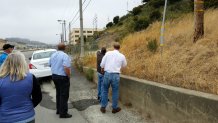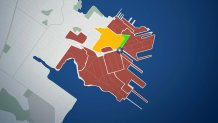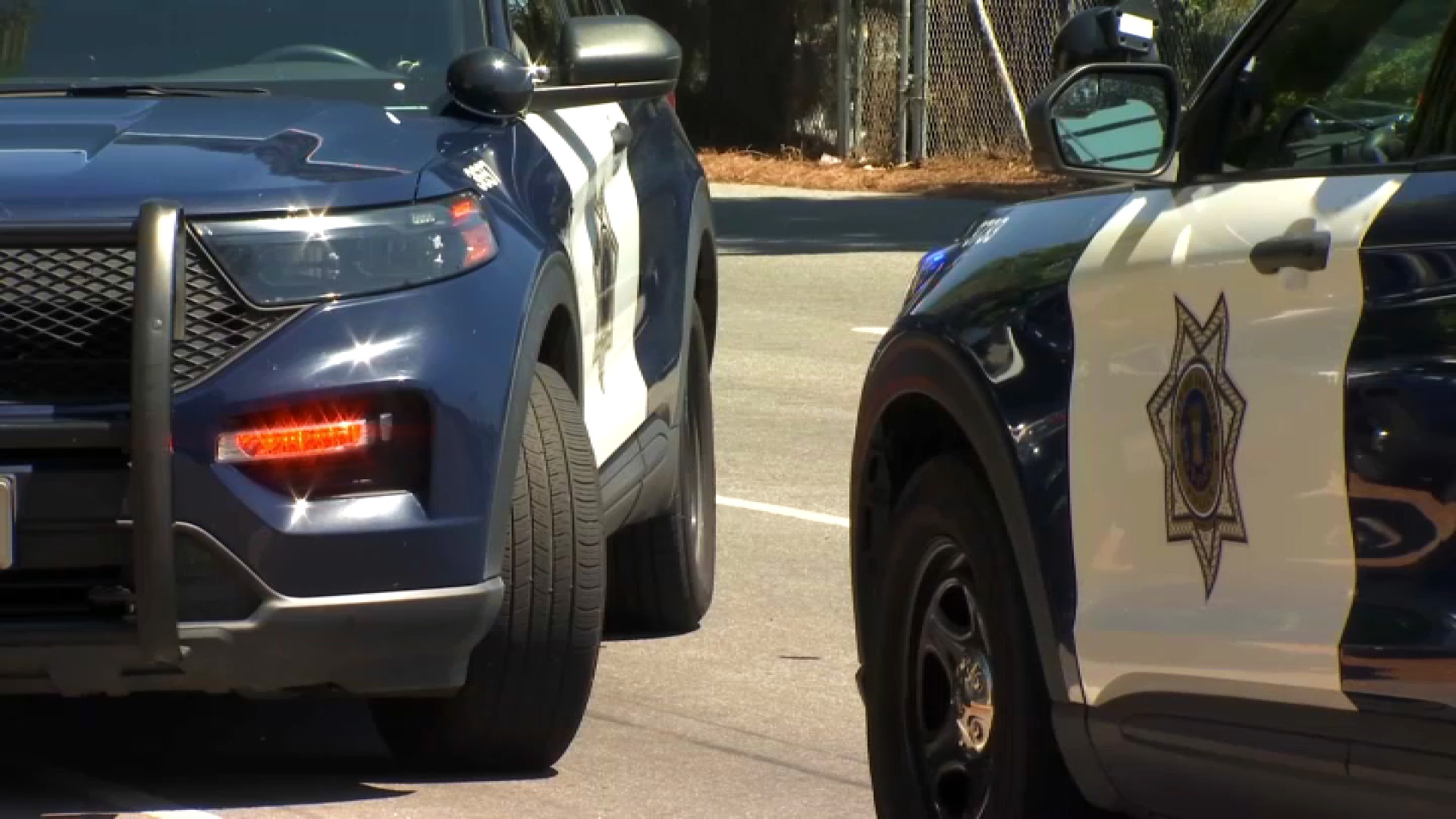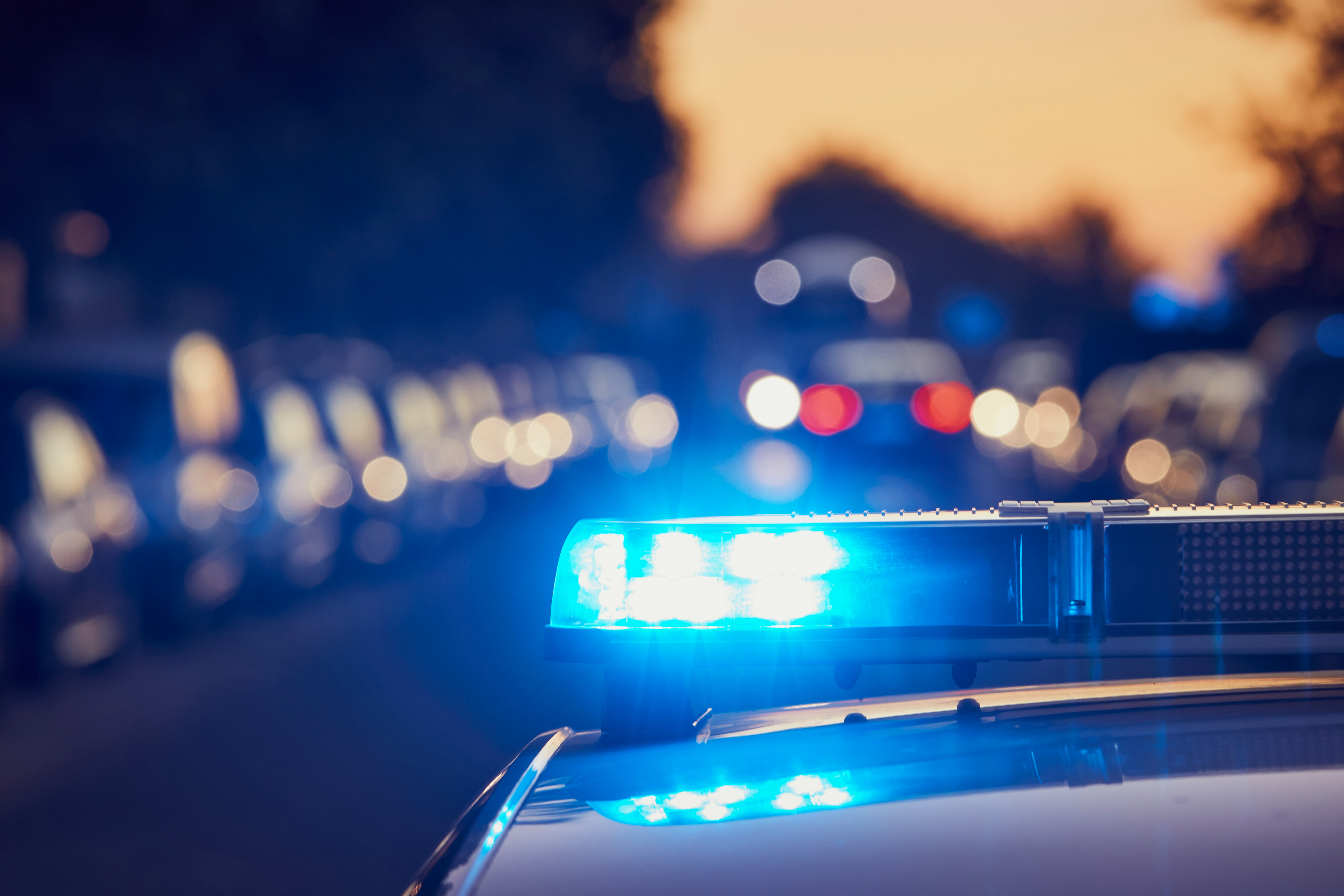A claim about an elevated level of radiation at the Hunters Point Shipyard is casting more doubt on the cleanup of San Francisco’s most infamous superfund site and onetime home of the Navy’s radiological defense lab.
In an interview with the NBC Bay Area Investigative Unit earlier this year, a whistleblower detailed how he says he took a soil sample from an area of the shipyard that he was told was supposed to be clean. Instead, the former radiation control technician says the sample tested positive for cesium at a level well above the acceptable cleanup limit.
Anthony Smith alleges that when his boss found out about it, he told him to keep his mouth shut – and to get rid of the soil sample.
“I said, ‘What do you want me to do with it?’” Smith said. “And he said, ‘Put it back where you had it.’ So I put it back in the hole where I got it from.”
Smith says this happened in 2009. Since then, the land in question has been turned over to the city of San Francisco. The spot where Smith says he took the sample is located on a hillside. New construction is underway at the top.
The Navy is now investigating and does not believe the area poses a risk to crews currently working on the shipyard or to people who have since moved into new condos on another area of the site. Despite learning of the allegation nearly a year ago, the Navy hasn’t yet decided if it will survey the area.
Smith says the only way to determine the full extent of potential contamination is to conduct tests.
“Unless you go out there and sample, you’ll never know,” he said.

Smith’s allegations involve a former boss who worked for Tetra Tech, the contractor the Navy hired to clean up radiological contamination. The company declined to comment on Smith’s allegations, citing an agreement with the Navy not to disclose details about its work on Hunters Point.
Local
NBC Bay Area first exposed in 2014 that Tetra Tech mishandled soil samples and falsified radiation data. The company said in an internal report that it retrained and disciplined the people responsible and cleaned up parts of the shipyard that tests later showed still contained elevated levels of radiological contamination. The Nuclear Regulatory Commission investigated and found some employees deliberately falsified soil sample data.
Then Smith revealed to NBC Bay Area in 2015 the ways in which he claims his supervisors instructed him to conceal radiation on the shipyard by switching contaminated soil samples with clean ones.
Last June, during a walkthrough with federal officials, Smith pointed out several areas of the shipyard he believes may still be contaminated. That’s when he told the feds about the soil sample. He has no records but says the sample tested positive for cesium at a level up to 25 times the cleanup standard. Exposure to cesium can increase the risk of cancer, according to federal health agencies.
In response to Smith’s allegations, the Navy launched an investigation into Tetra Tech’s past work on the site. A team of experts is currently reviewing soil sample data. But nearly a year after pointing out the alleged hotspot of cesium to the feds, the Navy has not tested the area. The government is waiting on recommendations from experts about what areas of the shipyard, if any, should be sampled.
“Go out there and sample,” Smith said. “Give it a shot. Hopefully and prayerfully the only place it’s found is right there. Would tickle me to death. Make me feel better.”
The location in question falls within an area of the shipyard known as Parcel UC-2. It borders Parcel A, a large area where people are already living in new residences. A commercial kitchen is being built near where Smith says he took the sample in 2009.

Attorney David Anton organized last summer’s meeting between Smith and federal officials and says the close proximity to new construction and potential exposure to crews working in the area should be enough to warrant immediate action by the Navy.
“They are coming up with a plan to figure out how to test it,” he said. “That’s a mistake when you are allowing people to work there today.”
Anton represented several former Hunters Point workers in a lawsuit against Tetra Tech. The workers claim they were retaliated against for raising red flags about the cleanup. The suit has since been settled. Anton said he believes the Navy is “turning its back” on a problem involving Parcel UC-2.
Navy officials say they have looked into Smith’s allegation closely.
“We don’t believe there is any risk to current users including the commercial kitchen people, people who work here, people who jog on the base, people who live here,” said Derek Robinson, the Navy’s Environmental Coordinator of the Hunters Point cleanup.
Robinson says the cesium Smith alleges to have found in a sample is typical of Bay Area surface soil. He says the level is not alarming, and it doesn’t pose a health threat.
But the level of cesium Smith says he detected is well above the Navy’s own cleanup standard for Hunters Point.
Robinson says the Navy has to meet that standard only if it’s determined contamination was caused by past Navy activity. For decades, the Navy operated a Radiological Defense Lab at the shipyard where it performed radiation experiments on animals and decontaminated warships exposed to nuclear weapons tests.
According to Robinson, professional judgment and consultation with regulatory agencies would be used to determine if cesium in surface soil constitutes a normal “background” concentration or if it’s due to Navy contamination.
Robinson also says no one is coming into contact with soil on the hillside in question. According to Navy reports, in 2012 a contractor removed two feet of soil from the area and replaced it with new soil. The work was performed as part of the general cleanup plan and not because the Navy suspected unusual levels of radioactivity.
A review of historical Navy reports by the NBC Bay Area Investigative Unit reveals no radiological surveys have ever been performed on the spot where Smith says he took the sample. And while Robinson acknowledges he doesn’t know for sure that area is not contaminated, he says he is confident that the area does not pose a risk to public health.
Next month he expects the Navy’s team of experts to recommend areas of the shipyard that contractors should test or retest, he said.
For his part, Smith says he hopes the Navy is taking his concerns to heart and that officials decide to act quickly.
“It’s a serious matter,” he said.
If you have a tip for the Investigative Unit email theunit@nbcbayarea.com or call 888-996-TIPS. Follow Liz Wagner on Facebook and Twitter.



